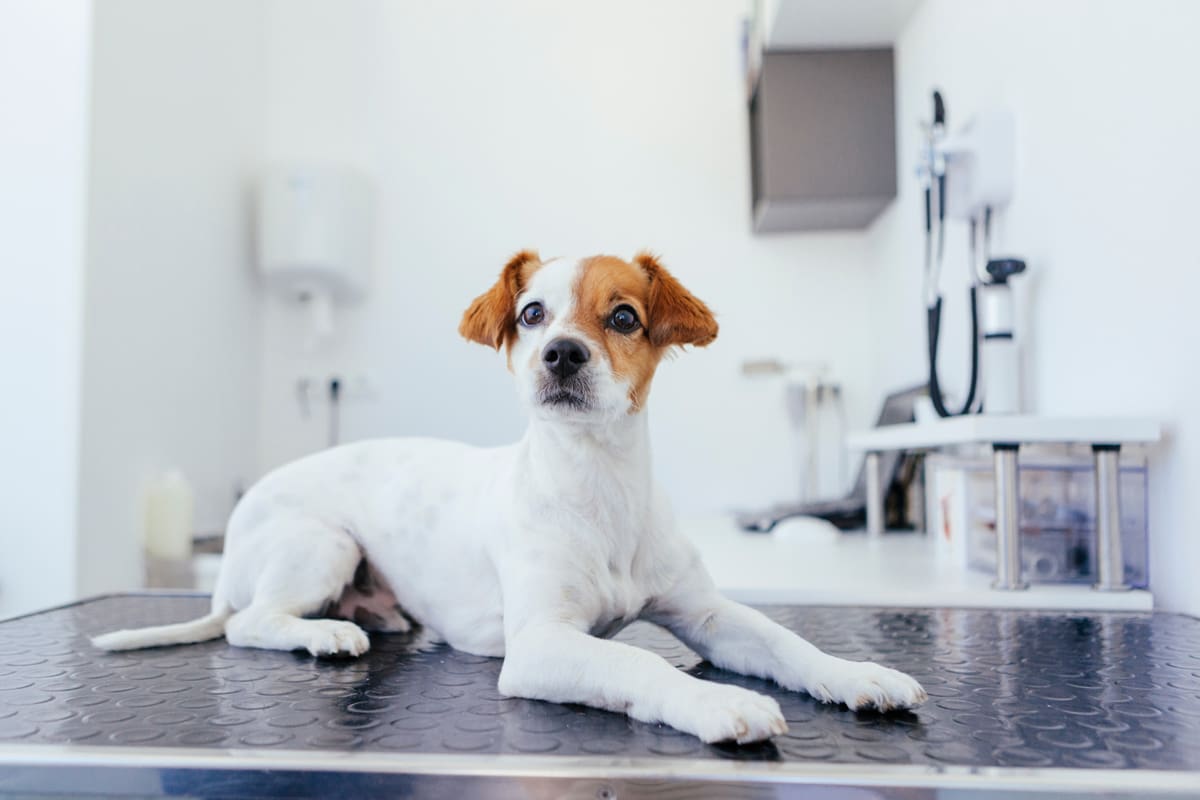
Going to the vets can be an uncomfortable experience for any dog. It’s a place where they are examined, handled and treated by a stranger, often when they are feeling unwell or are in pain.
This location can trigger strong negative feelings in them, if every time they enter the building, something unpleasant happens. This is why we suggest that you start off by creating a fun, pleasant experience the very first time they go into the vets, and create a strong positive association to this place where, inevitably, they will have to routinely attend throughout their lives.
Having a strong and supportive bond with your dog will allow you to begin to take them to environments such as this, as they will have trust in you that they are safe and this will give them more confidence to process their new surroundings.
Creating a positive experience
As soon as your puppy is old enough, or if you have adopted an adult dog and they are now settled well into your family and home, we recommend calling your vet to ask about quiet times to visit. Most vets will be more than happy to accommodate your request. Explain to them that this initial visit is simply to create a fun, positive experience for your dog. Take lots of high value treats, a KONG or chew and your dog’s favourite toy with you.
As you enter the building be vigilant for other dogs in the waiting area, and other interesting animals, such as cats or birds, and give them plenty of space. Allow your dog to take in the new sounds, sights and smells, which they will be experiencing for the first time. Metal objects, new people, strange dog scents, and medicinal smells are all new, so give plenty of space and time for your dog to take it all in. If the waiting room is empty, preferably with your dog on a harness, allow them to move around at their own pace with a loose lead, so they can pick and choose where they would like to go. Praise and treat your dog whenever they are looking calm, relaxed and confident. Also ask the nurses and the receptionist to give treats and talk to your dog.
Once your dog is comfortable in the waiting area, you can arrange a check-up with the vet. When you go into the consultation room, allow plenty of time for your dog to investigate the area, rewarding them along the way. Do not force them to do anything they appear to be nervous of, let them experience things at their own pace. If they are feeling confident and are happy being picked up, you could gently place them on the examination table whilst rewarding them. Perhaps giving them a KONG or chew to keep them from moving around. However, if you have a fully grown adult dog who is too large to lift, then preparing them to be comfortable with being examined on the floor area is the most appropriate.
The end goal would be for your dog to allow you and the vet to examine their body without getting worried; but remember not to push them too far. There is plenty of time and you can always come back another day. The slower you go, the more comfortable your dog will be.
Keeping up the association
It’s worth remembering that in order to maintain a positive association with the vets you should try and keep up the non-pressure and fun visits, in between real check-ups. This is so that your dog doesn’t feel like they only go there when they are poorly; sometimes fun happens there too.
If your dog really needs vet attention and they are not comfortable with being in the waiting area, you could wait in the car until it is clear to go in to reduce the chance of them feeling overwhelmed.
Sponsor a puppy and help support our life-changing work...
Imagine if everyday tasks were so challenging or physically demanding they affected your quality of life. For many people living with a disability or families with a child with autism, that is their reality. Now imagine if a specially trained four-legged friend could restore your, or your family’s, independence.
The demand for our services is high and we can’t help as many people as we would like to without more funding. Please help us continue to bring people and dogs together to help make everyday life possible in so many extraordinary ways.
When you sponsor a puppy with Dogs for Good, you help bring people and dogs together and support the start of life-changing connections.
